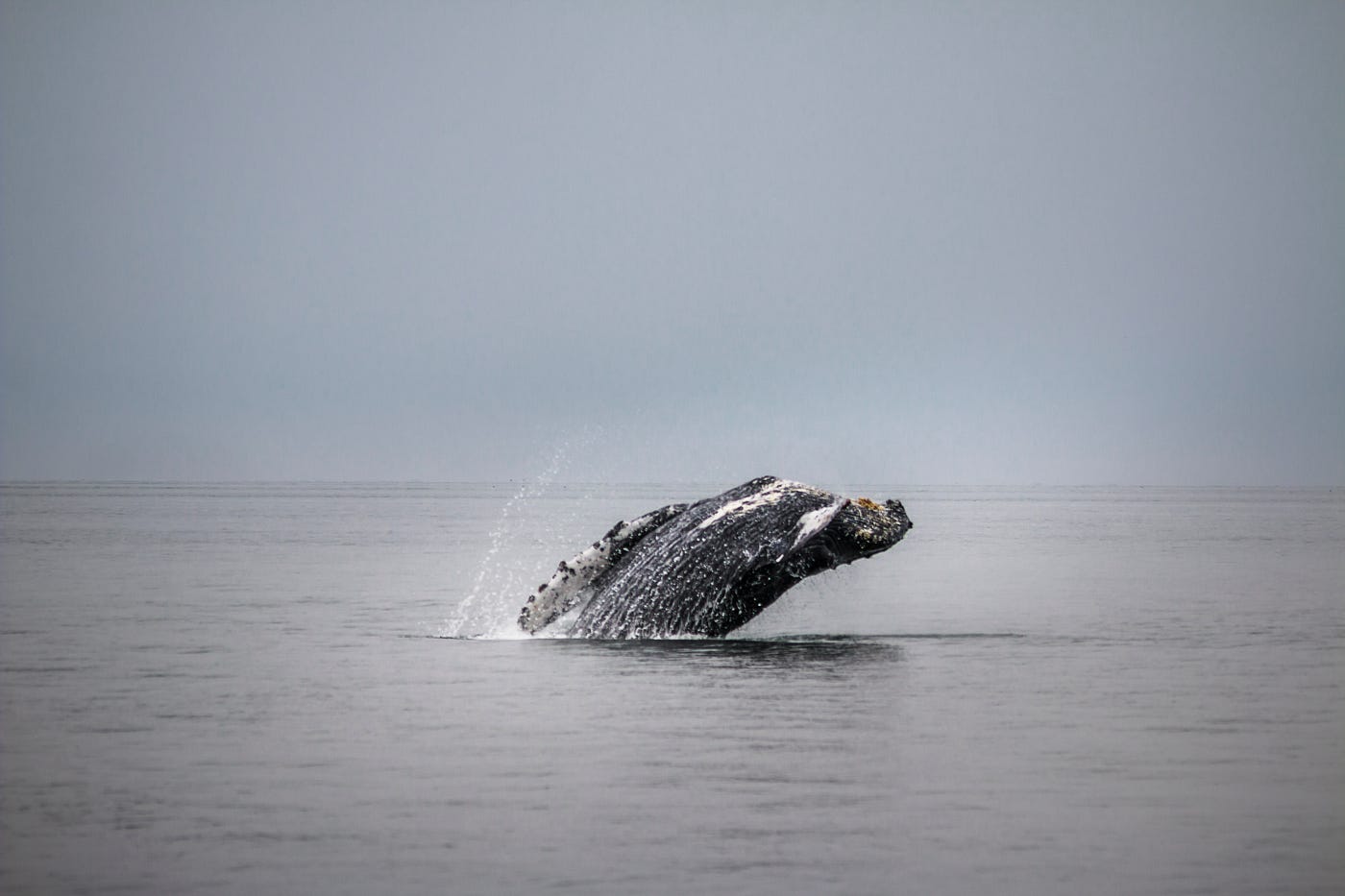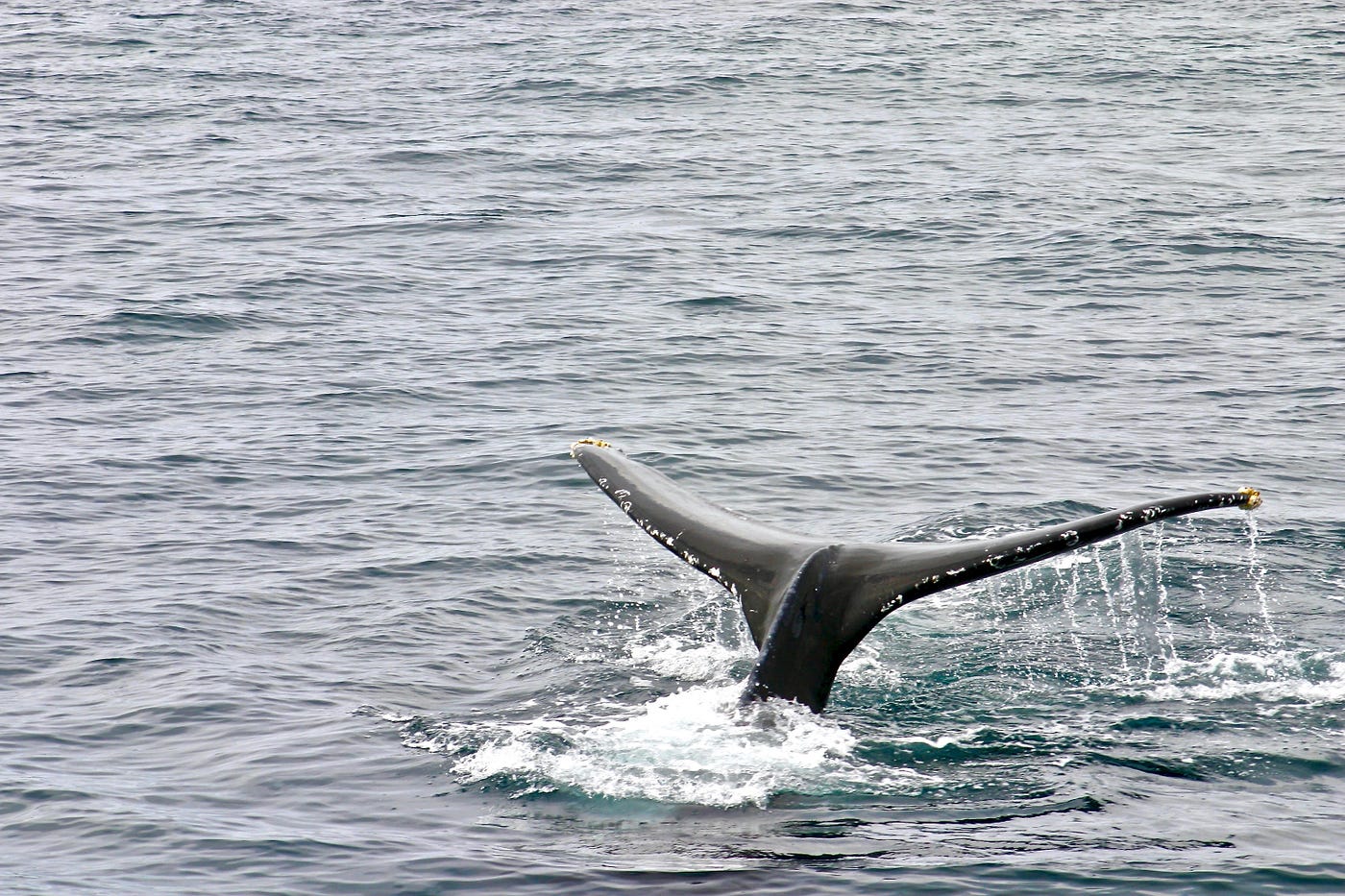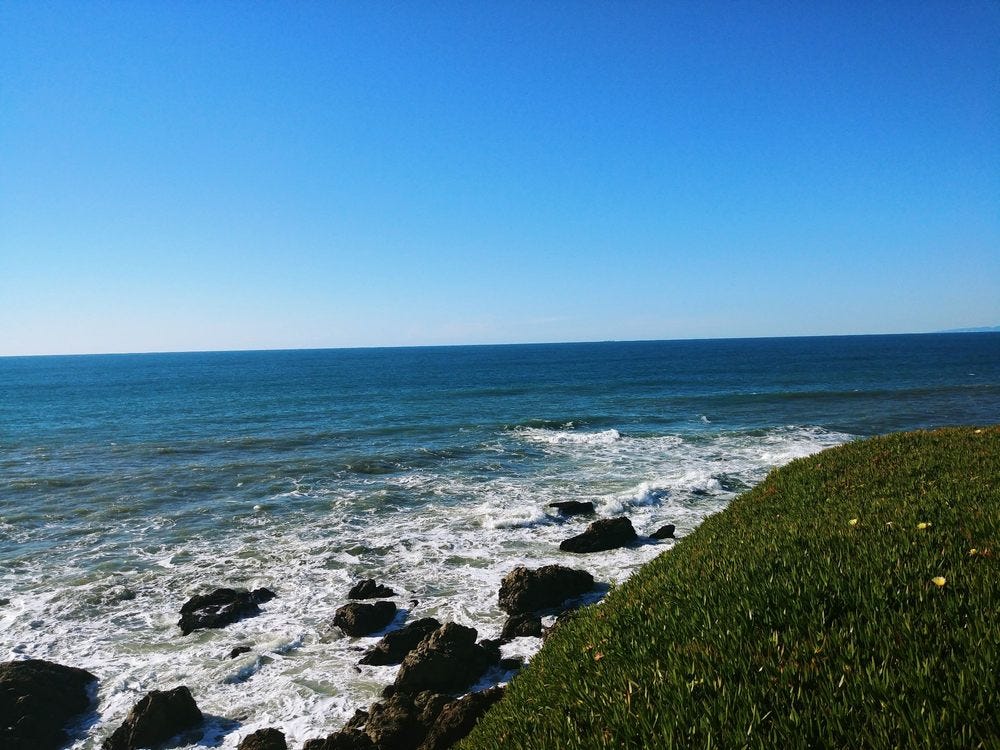FRIDAY FIVE

March marks the beginning of the wondrous time of the year when Bay Area residents can watch gray whales cruise along the California coast during their annual migration between the Arctic and Baja’s feeding grounds. What makes this time of year even more exciting than the early-winter season is that you might be able to catch a glimpse of mothers and their new calves.
If you’re unfamiliar, the gray whale migration route works like this: Each October, small groups of gray whales begin their 6,800-mile journey from the Bering Sea to the lagoons of Baja. The first ones to arrive are usually pregnant and give birth in the warm waters. By the middle of February, they make their way back to the Arctic for the summer. This annual round-trip migration is believed by scientists to be the longest made by any mammal on earth, totaling between 10,000 and 13,600 miles round trip.
Lucky for us, we are in a spot of the world where we can catch a glimpse of it in our backyards. As is the case with any wildlife-watching activity, we can’t guarantee you’ll see a whale from these points, but the chances are definitely in your favor.
1. Point Reyes peninsula headlands
Weather permitting, this can be one of the most pristine spots for watching gray whales cruise along the coast. Sitting along the Gulf of the Farallones — marked by the opening of the San Francisco Bay to Drakes Bay and to the Farallon Islands—the Point Reyes peninsula is part of the 20-mile highway along which the whales travel back and forth.
In March, April and May, the whales are often seen closer to the shore — especially those with their calves — in an effort to stay away from predators. The topography of the headlands gives watchers an edge, because the peninsula protrudes 10 miles into the Pacific Ocean, providing observers with a closer view. Unfortunately, due to a restoration project, areas beyond the visitor parking lot are closed. However, the National Park Service website recommends the South Beach overlook as a great location that is still open to whale watchers.
2. Rodeo Beach
Known for its bird-watching opportunities and unique features, such as the multicolored pebbles intermixed with the sand, this whale-watching oasis is an easy drive from the Bay Area. It’s only three miles northwest of the Golden Gate Bridge in Marin. Whale watching here can be super-relaxing and enjoyable on a sunny day. Just bring a blanket, friends and perhaps some drinks; soak up the California sun; and admire the whales breaching and playing in the distance. Pro tip: check the fog report beforehand. The chances of seeing whales are obviously better on a clear day.

3. Año Nuevo State Park
Located in San Mateo County, Año Nuevo State Park is known for the elephant seals who usually call this beach home (nearly 10,000 of these seals breed and give birth along the dunes here). At this state park, whale watchers can lounge on the beach (make sure to bring layers and a jacket) and hike along the ocean bluffs to Año Nuevo Point in between whale-watching sessions. If you aren’t sure what to look for, remember that whales spout water that can shoot up to 12 feet in the air. Look out to the horizon, and start identifying anything that breaks the surface of the water.
4. Point Montara Lighthouse
Located 25 miles south of San Francisco, near Half Moon Bay in Montara, California, a charming white lighthouse sits on a bluff overlooking the Pacific Ocean. The actual lighthouse previously operated as a fog-signal station in the late 1800s. Today it serves as a navigational aid that is maintained by the US Coast Guard. Right next to the lighthouse is a hostel on the bluffs, and below it is a picturesque beach. In between whale sightings, a relaxed walk along the this beach makes for a perfect Saturday or Sunday.

5. Bodega Head
Bodega Bay sits along Sonoma County’s coast, and similar to the Point Reyes peninsula, this stretch of land juts out into the ocean, bringing coastal viewers closer to the whales. Bodega Head of Bodega Bay is located 40 miles northwest of San Francisco and can be reached in about a two-hour drive from the city. Between January and Mother’s Day on weekends, volunteers for the Whale Watch Public Education Program hang out around Bodega Head to answer any questions visitors might have about the whales and their journey. You can identify the volunteers by their green vests with bright-yellow “Whale Watch” lettering.







